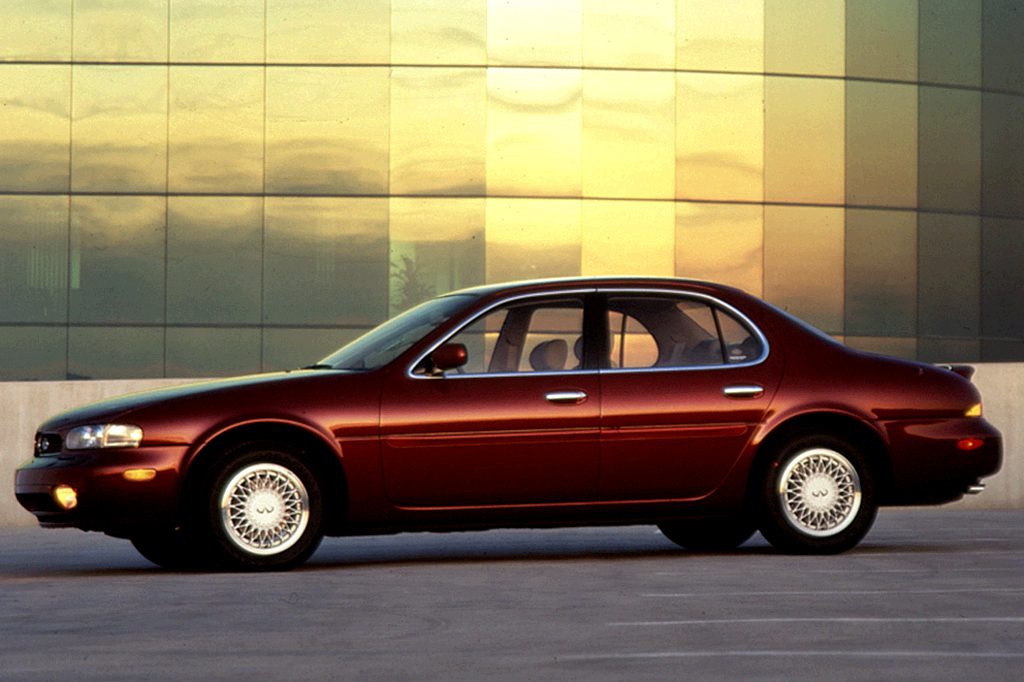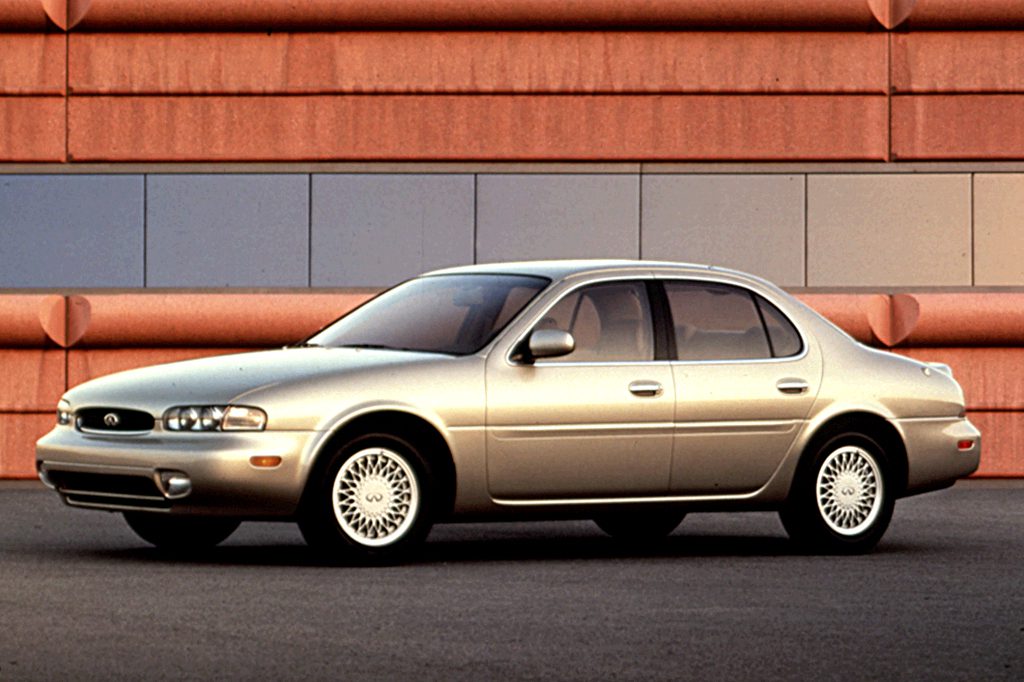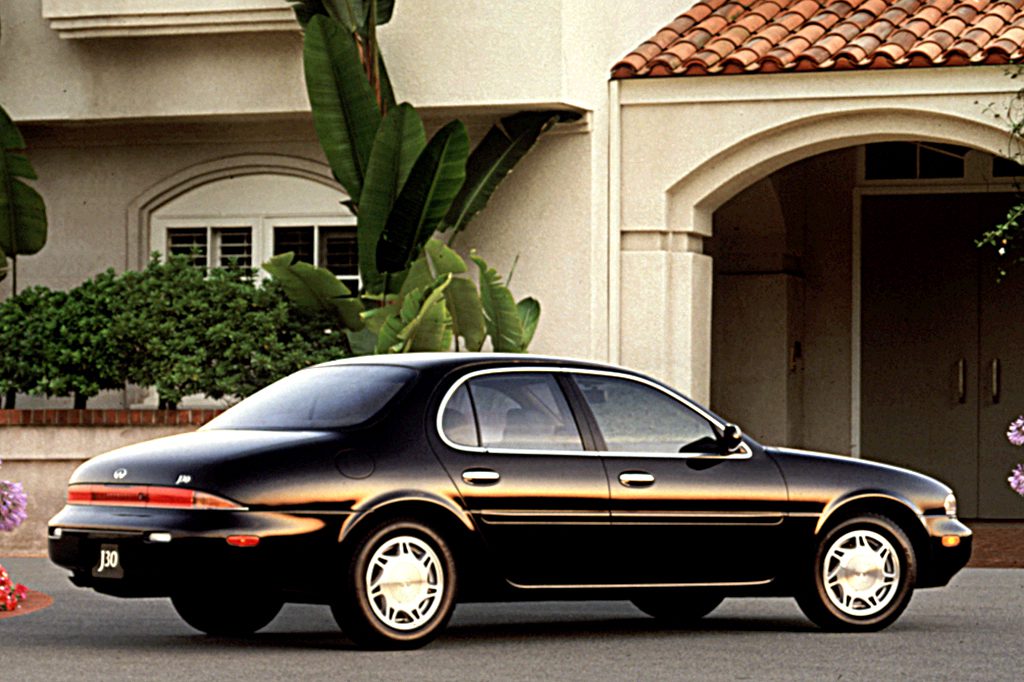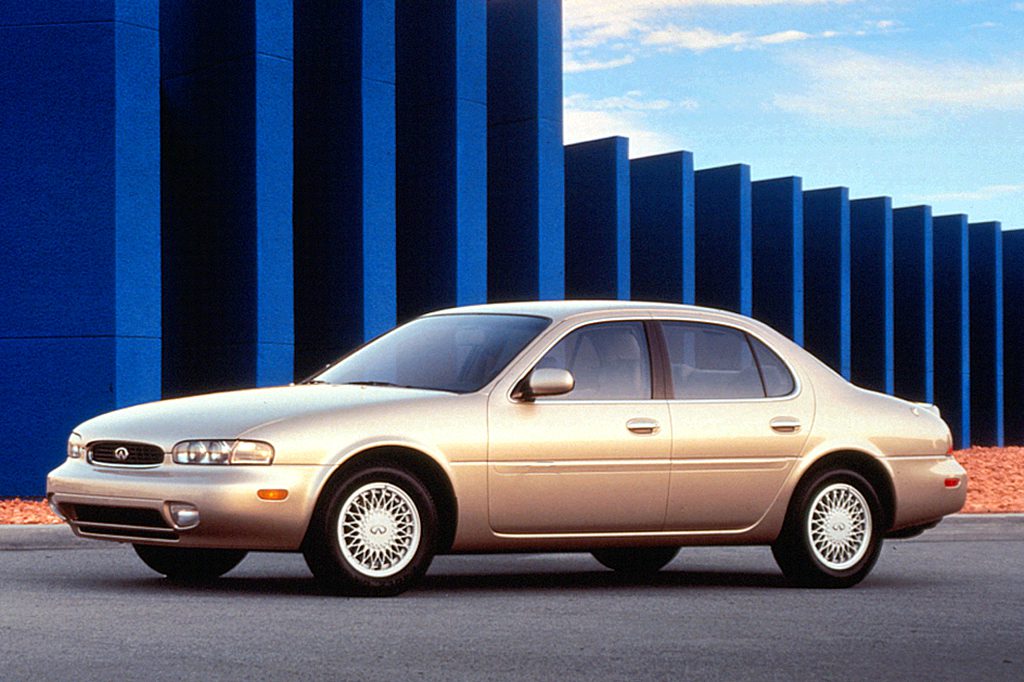| Premium midsize car; Built in Japan |
|
|
| Good condition price range: $1,400 – $3,300* |

1993 Infiniti J30t

1995 Infiniti J30t

1996 Infiniti J30

1997 Infiniti J30t

1997 Infiniti J30t
| Pros: |
|
| Cons: |
|
A fine car overall, blending luxury extras and a somewhat sporty personality, the J30 simply fails to stand out among luxury 4-doors. All told, it lacks the polish and refinement of such rivals as the front-drive Lexus ES 300.
Overview
Introduced as an early 1993 model, the midpriced rear-drive 4-door sedan from Nissan’s luxury division occupied a niche between the big Q45 and the entry-level G20. Sole powertrain was a dual-camshaft, 210-horsepower, 3.0-liter V6 driving a 4-speed automatic transmission. Driver- and passenger-side airbags were standard, as was all-disc antilock braking. An optional Touring package added Super HICAS 4-wheel steering, a firmer suspension, rear spoiler, and high-performance tires on forged alloy wheels, giving the car a “J30t” badge on the trunk.
Yearly Updates
| 1994 J30 Heated front seats became standard this year, and a crimson exterior and black interior became available. Audio tweeters were added to front roof pillars. |
| 1995 J30 A new full-width taillight cluster was installed, with subtle vertical ribbing behind the lens. |
| 1996 J30 Except for new exterior colors, nothing was new for the J30. |
| 1997 J30 Despite $4000 price cuts, sluggish sales caused Infiniti to drop the J30 after 1997. |
